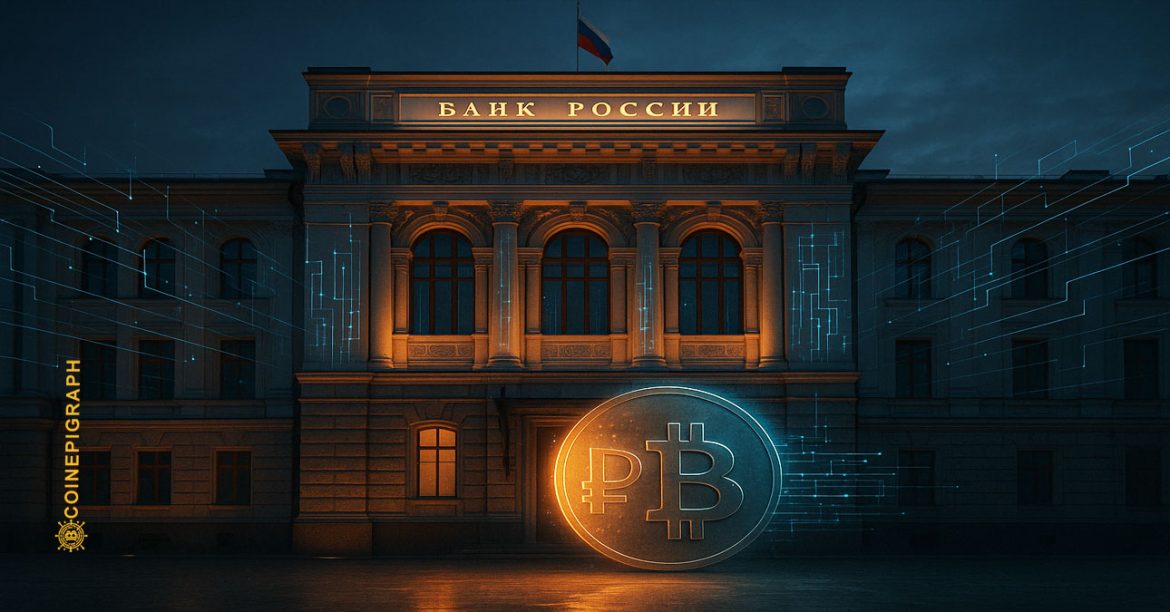By CoinEpigraph Editorial Desk
For years, the Bank of Russia resisted the idea of legalizing cryptocurrency exchanges, warning of capital flight, money laundering, and the erosion of monetary sovereignty. But in a sharp policy reversal, the central bank now says legalization is not only inevitable — it’s necessary.
This new stance, reported by Russian media and confirmed in statements from senior officials, marks a strategic pivot from prohibition to pragmatic regulation. Behind the change lies a clear geopolitical motive: sanctions have cut Russia off from much of the global financial system, and crypto may be the only viable channel for maintaining international liquidity.
A Shift Born of Sanctions
According to central bank representatives, the Bank of Russia now supports a legal framework for crypto exchanges — one that would allow regulated conversion between the ruble and digital assets under domestic oversight. The shift is part of a broader attempt to normalize cross-border settlements using cryptocurrencies, especially in trade with “friendly” nations such as China, the UAE, and India.
The urgency is obvious. Western sanctions have locked Russian institutions out of SWIFT and restricted access to dollar- and euro-denominated payment systems. The Kremlin’s policy planners now see blockchain rails as a financial bypass, an alternative architecture less dependent on Western intermediaries.
Where crypto once represented risk, it now represents resilience.
Bank of Russia Deputy Governor Alexey Guznov confirmed that the new plan aims to create “legal and transparent access” to crypto markets while maintaining “macroprudential control.” The bank will reportedly propose a pilot licensing model for exchanges by mid-2026, with anti-money-laundering protocols and transaction limits designed to prevent domestic speculation.
From Prohibition to Permission
Until recently, Russia’s approach to crypto was dominated by fear of capital flight and tax evasion. The country officially banned crypto payments in 2020, and the central bank repeatedly called for an outright ban on mining and trading.
But by 2024, reality intervened. Mining became one of the few export-oriented sectors still drawing foreign capital, and businesses began using stablecoins and Bitcoin for international trade — quietly, and often outside legal channels.
Rather than continuing to criminalize these flows, regulators are now moving to institutionalize them.
The model being discussed resembles a state-supervised exchange corridor, where certified platforms operate under a national gateway while transaction data is monitored by both the Bank of Russia and Rosfinmonitoring (the financial intelligence agency).
This approach mirrors what countries like Iran and Venezuela have already done: accept crypto’s inevitability, then control it.
Crypto as a Geopolitical Instrument
In geopolitical terms, this policy shift is less about innovation and more about financial survival. Russia’s access to global capital markets remains deeply constrained, and gold, oil, and digital assets are now the core of its parallel settlement strategy.
Legalizing exchanges effectively creates a sovereign crypto perimeter — one that allows trade and investment flows outside Western visibility, while giving the state data and leverage over those transactions.
If successful, the move could reshape global crypto geopolitics. A sanctioned nation embracing regulated exchanges could normalize digital assets in intergovernmental trade, pushing other BRICS members to accelerate their own regulatory frameworks for tokenized settlements.
As one Russian economist put it, “Crypto has become Russia’s Plan B payment system — not because of ideology, but necessity.”
Risks Beneath the Pivot
Still, the risks are substantial. Legalizing exchanges under Russian jurisdiction will invite scrutiny from global regulators, especially the FATF and OECD, which maintain strict anti–money-laundering standards. Western financial institutions may view such exchanges as extensions of sanctioned entities, potentially cutting them off from international liquidity providers.
Domestically, the risk is inflationary. If Russians can freely move capital through digital assets, the ruble could face outflow pressure, weakening monetary control. The central bank’s challenge is to balance strategic autonomy with macroeconomic stability — a balance easier promised than achieved.
The Larger Message
The Bank of Russia’s policy shift may be less about crypto’s future than about fiat’s limitations. A central bank built to manage interest rates and credit cycles is now being repurposed to manage constraints — political, financial, and technological.
In that light, this is not a story about Russia “embracing” crypto. It’s a story about a state adapting to the end of financial hegemony. The same blockchain systems once seen as threats to monetary order are now being conscripted into national strategy.
If gold is being remonetized under Basel III, crypto is being relegitimized under geopolitics.
And that, for the global monetary map, may prove just as significant.
At Coinepigraph, we pride ourselves on delivering cryptocurrency news with the utmost journalistic integrity and professionalism. Our dedicated team is committed to providing accurate, insightful, and unbiased reporting to keep you informed in the ever-evolving crypto landscape. Stay tuned as we expand our coverage to include new sections and thought-provoking op-eds, ensuring Coinepigraph remains your trusted source for all things crypto. -Ian Mayzberg Editor-in-Chief
The team at CoinEpigraph.com is committed to independent analysis and a clear view of the evolving digital asset order.
To help sustain our work and editorial independence, we would appreciate your support of any amount of Bitcoin/Satoshi to this address below: 3NM7AAdxxaJ7jUhZ2nyfgcheWkrquvCzRm
and through our Support Page.
🔍 Disclaimer: CoinEpigraph is for entertainment and information, not investment advice. Markets are volatile — always conduct your own research.
COINEPIGRAPH does not offer investment advice. Always conduct thorough research before making any market decisions regarding cryptocurrency or other asset classes. Past performance is not a reliable indicator of future outcomes. All rights reserved 2024-2025.




